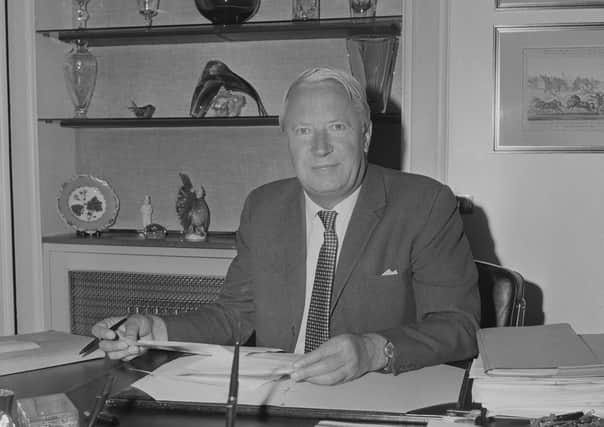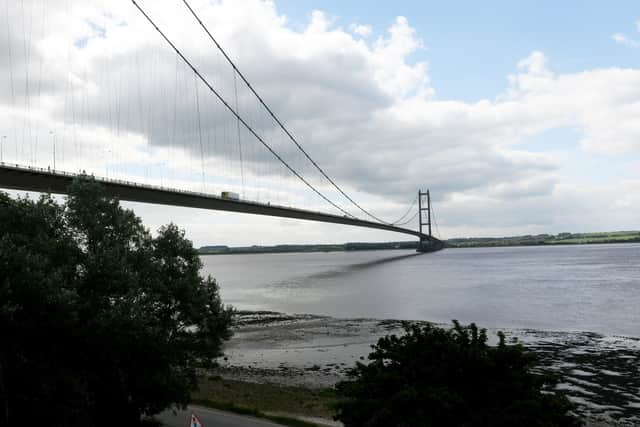Restore our Ridings in Yorkshire and end Edward Heath’s ‘vandalism’ – Jonathan Caine


It provoked a lively and passionate debate, with contributions from Yorkshire members, of all parties, to the fore.
As one of those Yorkshire members, born, bred and who still lives in the West Riding, my own contribution was to ask the Government “finally to overturn the vandalism of the early 1970s and restore the territorial integrity and names of the ancient Ridings of God’s own county”, as reported in The Yorkshire Post last Friday.
Advertisement
Hide AdAdvertisement
Hide Ad

I was, of course, referring to the reorganisation of local government undertaken by the Heath government in 1972 and which came into effect, appropriately enough, on April Fool’s Day in 1974. It was one of the most unpopular and unloved reforms undertaken by any government in modern British history.
Within the Conservative Party, dissatisfaction was rife. The then Yorkshire Area Chairman wrote to Edward Heath warning of “a very marked depression” in the county.
Advertisement
Hide AdAdvertisement
Hide AdDespite this, the Government continued undeterred. At a stroke, historic counties which had formed part of the fabric of our country for nearly a 1,000 years, and which for so many formed the basis of local affection, pride and loyalty, were altered beyond recognition.


Great Yorkshire cities like Middlesbrough and Hull found themselves out of the county altogether in ghastly new creations – Cleveland and Humberside. The West Riding, from where I write, was carved up; towns and districts such as Selby, Tadcaster and Harrogate transferred into the new North Yorkshire while Sheffield went into South Yorkshire.
Above all, our beloved Ridings – meaning a third and mentioned as far back as the Domesday Book in 1086 – disappeared from the administrative map of England. Instead of conserving the best of our heritage, history and traditions, a Conservative Government regrettably destroyed them in the name of “efficiency” and “modernisation”. My description of this in the Lords as “vandalism” was entirely justified.
The reorganisation of 1972-74 barely stood the test of time. The Metropolitan County Councils, including West Yorkshire, went in 1986, while the artificial constructs of Cleveland and Humberside mercifully disappeared a decade later. Welcome as this has been, I believe that there remains significant unfinished business – and that, of course, includes the restoration of our ancient Ridings.
Advertisement
Hide AdAdvertisement
Hide AdTo be fair, there have been some encouraging development. In 2014 the Government changed the planning laws to enable English councils to put up signs marking historic county boundaries. Yet every time I cross the small bridge from Leeds into Harrogate district I am greeted with the sign ‘County of North Yorkshire’, even though I am still in the historic West Riding.
Few people would, I suspect, support yet another expensive and disruptive upheaval of local government, especially when we are only just becoming used to so-called metro mayors. What, therefore, can be sensibly done?
My colleague, Lord Lexden, suggested that our historic counties should appear on all maps as a matter of course and be used for all ceremonial occasions. Lord Lieutenants would represent historic counties. This is advocated by the Campaign for Historic Counties.
Thus, for example, Harrogate could be restored to the West Riding while continuing to be administered by a renamed ‘North Yorkshire Council’ without any direct county association. Traditional counties could be restored without being subject to changing local government boundaries.
Advertisement
Hide AdAdvertisement
Hide AdSomething similar has already been done in another part of the United Kingdom that I know very well – Northern Ireland. The most recent local government reorganisation did not affect the historic boundaries of the six counties there, and anyone in Northern Ireland will immediately tell you from which county they hail.
Yet, Lisburn and Castlereagh Council includes parts of Down and Antrim. Omagh, the county town of Tyrone, forms part of Fermanagh and Omagh Council while other parts of Tyrone are in Mid Ulster and Strabane is in the Derry and Strabane Council area. Traditional county Lord Lieutentants remain unaffected. Perhaps we can learn from Northern Ireland.
Is any of this the most pressing issue facing the country at the moment? Of course not. In due course, however, I believe that the proposals set out above are worthy of consideration. As a proud Yorkshireman, from the historic West Riding, I am confident they have the potential to be supported across the whole of our glorious county.
Jonathan Caine is a Tory peer and former special adviser to six Northern Ireland Secretaries.
Advertisement
Hide AdAdvertisement
Hide AdSupport The Yorkshire Post and become a subscriber today. Your subscription will help us to continue to bring quality news to the people of Yorkshire. In return, you’ll see fewer ads on site, get free access to our app and receive exclusive members-only offers. Click here to subscribe.
Comment Guidelines
National World encourages reader discussion on our stories. User feedback, insights and back-and-forth exchanges add a rich layer of context to reporting. Please review our Community Guidelines before commenting.